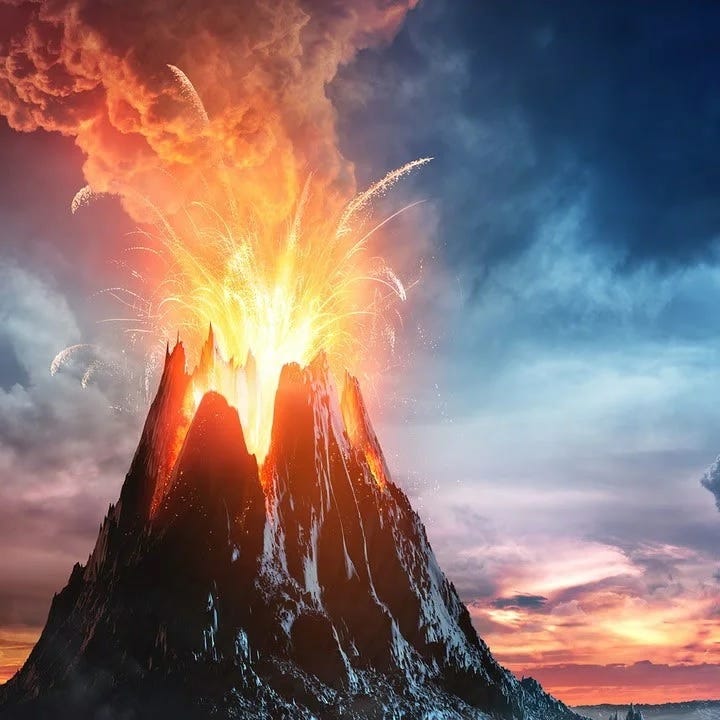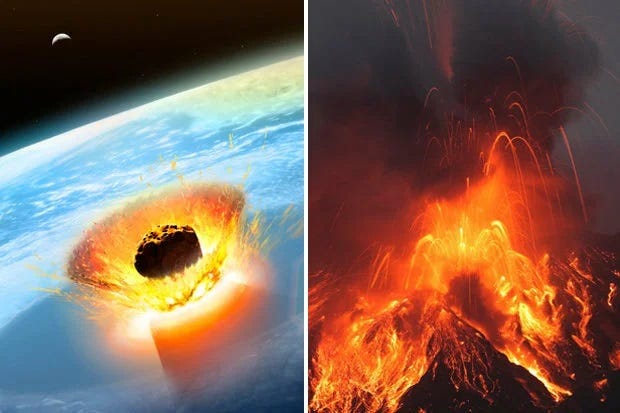Exploring the Possibility of Volcanoes Launching Rocks into Orbit
Written on
Chapter 1: Can Volcanoes Propel Rocks into Space?
In today's discussion, I am addressing a fascinating question posed by one of my subscribers from Ukraine. The query is: Is it possible for an erupting volcano to have sufficient force to launch fragments of Earth into outer space, potentially sending them toward other planets? What conditions would need to be met for such an event to occur?
It's widely acknowledged that numerous meteorites originate from celestial bodies such as Mars. However, one wonders what magnitude of explosion—like that from an asteroid impact—would be necessary to displace pieces of a planet while leaving it largely unscathed.
Different perspectives exist on this topic. The scenario you describe is not feasible with the typical volcanoes we are familiar with. The emissions from standard volcanic eruptions can achieve supersonic speeds, yet none of the existing models suggest that the ejected materials can surpass 1000 m/s, which is less than 10% of the required escape velocity of 11 km/s. Furthermore, even if a stone could reach such speeds, it would most likely disintegrate upon entering the atmosphere. To escape Earth, a fragment must not only travel at high velocity but also be sufficiently large to survive the intense heat of atmospheric entry.

Source: BusinessInsider.com
There is, however, a hypothesis regarding extraordinarily powerful volcanic eruptions known as "Verneshot." Named after the French author Jules Verne, who penned "From the Earth to the Moon," this theory posits that occasionally, plumes of mantle material surge toward the Earth's crust.
As these plumes rise, substantial amounts of carbon dioxide can accumulate beneath the crust. When this gas builds up beneath a solid lithospheric plate, it can cause fractures, leading to a cataclysmic explosion. Debris from both the plate and mantle can be expelled to significant altitudes, potentially reaching the stratosphere or even the vicinity of space.

Source: dailystar.co.uk
Several extinction events in Earth's history, including that of the dinosaurs, have been linked to the Verneshot theory. The prevailing view is that the extinction event for dinosaurs was triggered by a meteor impact in what is now Mexico (Chicxulub crater). However, it is interesting to note that this coincided with a significant eruption that created the Deccan Traps in India. Proponents of the Verneshot theory suggest that rather than a meteorite impacting Mexico, a fragment of Earth's crust was propelled skyward by the eruption of the Deccan Traps. Conversely, some supporters argue that the meteorite impact was a catalyst for the volcanic activity that produced the Deccan Traps.
Ultimately, it may be impossible to definitively resolve this debate. As someone who is not a geology expert, I apologize for any inaccuracies in my explanation of the Verneshot mechanism.
If you’re interested in more articles about space, be sure to clap!
Subscribe to our channel and feel free to submit your questions for future articles.
Chapter 2: The Science Behind Volcanic Eruptions
In this video titled "Why Don't We Throw Trash in Volcanoes?", we explore the intriguing question of whether it would be viable to dispose of waste in volcanic eruptions. The video delves into the science behind volcanic activity and waste management.
The second video, "Throwing A Huge Rock Into A Volcano And It EXPLODES," demonstrates the explosive power of volcanic eruptions and showcases the dynamics of materials interacting with molten lava.